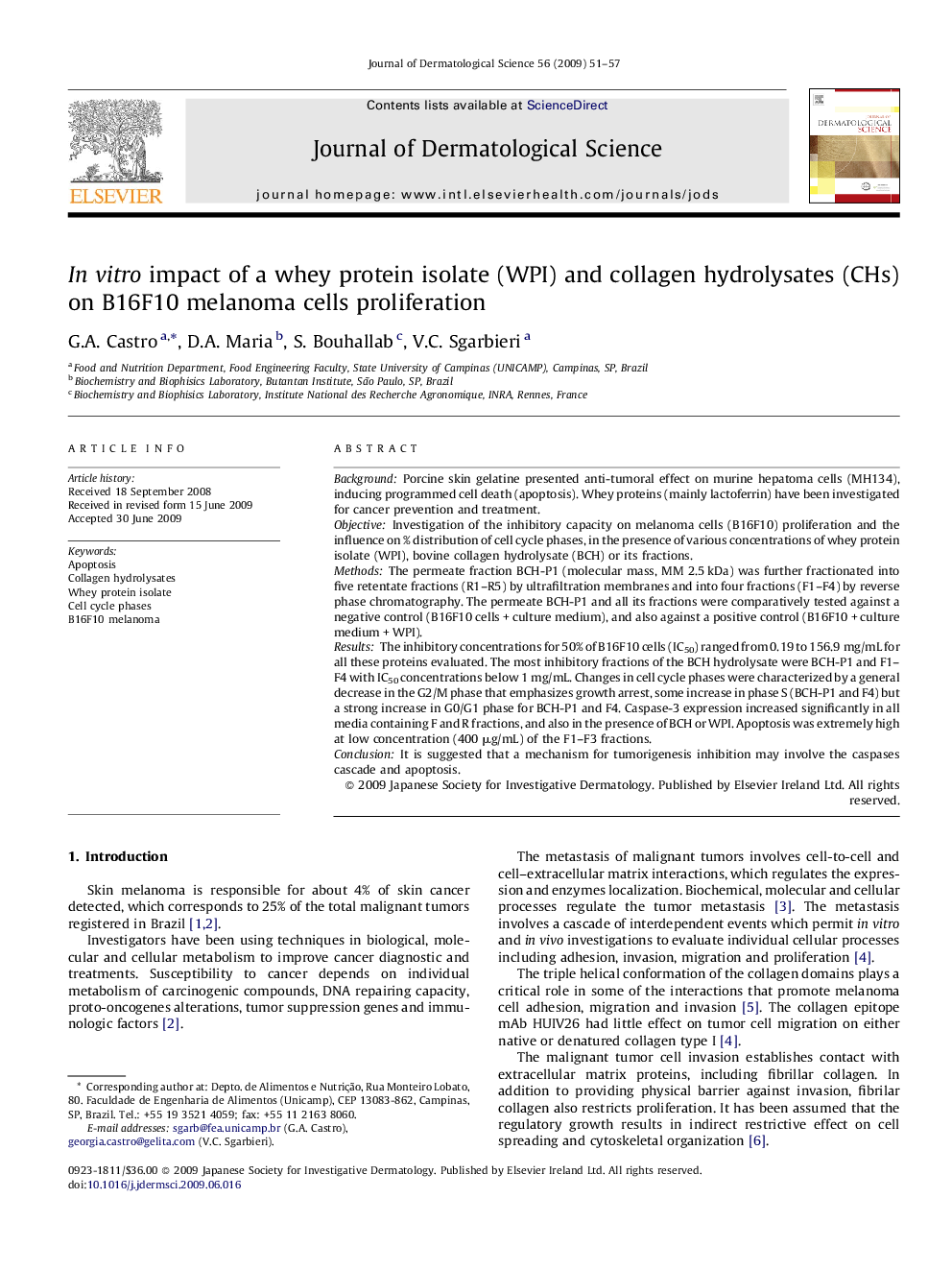| Article ID | Journal | Published Year | Pages | File Type |
|---|---|---|---|---|
| 3213734 | Journal of Dermatological Science | 2009 | 7 Pages |
BackgroundPorcine skin gelatine presented anti-tumoral effect on murine hepatoma cells (MH134), inducing programmed cell death (apoptosis). Whey proteins (mainly lactoferrin) have been investigated for cancer prevention and treatment.ObjectiveInvestigation of the inhibitory capacity on melanoma cells (B16F10) proliferation and the influence on % distribution of cell cycle phases, in the presence of various concentrations of whey protein isolate (WPI), bovine collagen hydrolysate (BCH) or its fractions.MethodsThe permeate fraction BCH-P1 (molecular mass, MM 2.5 kDa) was further fractionated into five retentate fractions (R1–R5) by ultrafiltration membranes and into four fractions (F1–F4) by reverse phase chromatography. The permeate BCH-P1 and all its fractions were comparatively tested against a negative control (B16F10 cells + culture medium), and also against a positive control (B16F10 + culture medium + WPI).ResultsThe inhibitory concentrations for 50% of B16F10 cells (IC50) ranged from 0.19 to 156.9 mg/mL for all these proteins evaluated. The most inhibitory fractions of the BCH hydrolysate were BCH-P1 and F1–F4 with IC50 concentrations below 1 mg/mL. Changes in cell cycle phases were characterized by a general decrease in the G2/M phase that emphasizes growth arrest, some increase in phase S (BCH-P1 and F4) but a strong increase in G0/G1 phase for BCH-P1 and F4. Caspase-3 expression increased significantly in all media containing F and R fractions, and also in the presence of BCH or WPI. Apoptosis was extremely high at low concentration (400 μg/mL) of the F1–F3 fractions.ConclusionIt is suggested that a mechanism for tumorigenesis inhibition may involve the caspases cascade and apoptosis.
